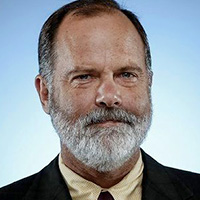THE LANDSCAPE OF FEAR ANALYZED in this issue of Blueprint is broad. It stretches from American schools to Liberian farms, from victims of hate to the crushing impact of climate change. The result of that fear is most often negative — destruction of rainforests, distractions in a public health crisis, ineffective solutions to gun violence. Cool reasoning would, in all those instances, produce better policy than reaction and overreaction to fear.
And yet, not all fear is bad: If anything, Americans are not afraid enough of climate change, and UCLA researcher Daniel Swain is taking on the mission of alerting the public to its dangers. Sometimes that requires a nuanced comprehension of fear, communicating the complicated question of how to regard potential catastrophes that are of relatively low probability but would be of immensely high consequence. Swain’s analysis of possible “megafloods” in California’s future, for instance, requires considering two variants of fear at the same time: How to respond to something unlikely to happen anytime soon, but if and when it does, how to be prepared with effective protection.
Fear also is present in more routine parts of our personal and public lives, perhaps most obviously in the context of elections. This issue of Blueprint is being published as voters in California are preparing to choose their leaders. Elections often plumb deep emotions — hope and anger are commonly in play — and fear is among them.
With that in mind, several of our articles address these elections, which offer sometimes contradictory impressions of the electorate. Gov. Gavin Newsom appears headed to an easy re-election, which suggests a contented California, while two candidates, Rick Caruso and Karen Bass, are furiously vying to become the next mayor of Los Angeles and offering divergent views of the city’s soundness and future. In a Blueprint exclusive, this issue’s Table Talk features a virtual debate between them. It presents their answers to questions about issues such as homelessness, public safety and insurrection — all of which go to the core of fear and politics.
If there is a transcendent takeaway from this issue, it is that fear is inescapable and sometimes necessary — and yet its influence on politics and policy must be monitored. Although fear helps to sound a warning of danger ahead, it can exaggerate the response, or misguide the energy created by that warning, leading to dire results.
We opened this issue with a reminder by Louis Brandeis that fearing witches led to burning women. This observation was included in one of his most memorable writings as a justice of the United States Supreme Court — a forceful defense of speech in a free society. Our nation’s founders rightly recognized, Brandeis wrote, “that order cannot be secured merely through fear of punishment for its infraction; that it is hazardous to discourage thought, hope and imagination; that fear breeds repression; that repression breeds hate; that hate menaces stable government; that the path of safety lies in the opportunity to discuss freely supposed grievances and proposed remedies; and that the fitting remedy for evil counsels is good ones.” Rarely has speech been better summoned against fear.
Nonetheless, it is important to remember, as we consider the effect of fear on policy, that Brandeis’ eloquence was of limited worth to Charlotte Anita Whitney, whose case Brandeis and his colleagues were considering. She had been convicted of helping establish the Communist Labor Party of America, a group charged with supporting violence against the government. The same justice who so trumpeted speech as a reply to hatred, and debate as an alternative to punishment, concurred with his colleagues in affirming Whitney’s conviction. She was sentenced to prison; only poor health and a gubernatorial pardon allowed her to serve just 11 days.
Fear is a stubborn enemy.
























